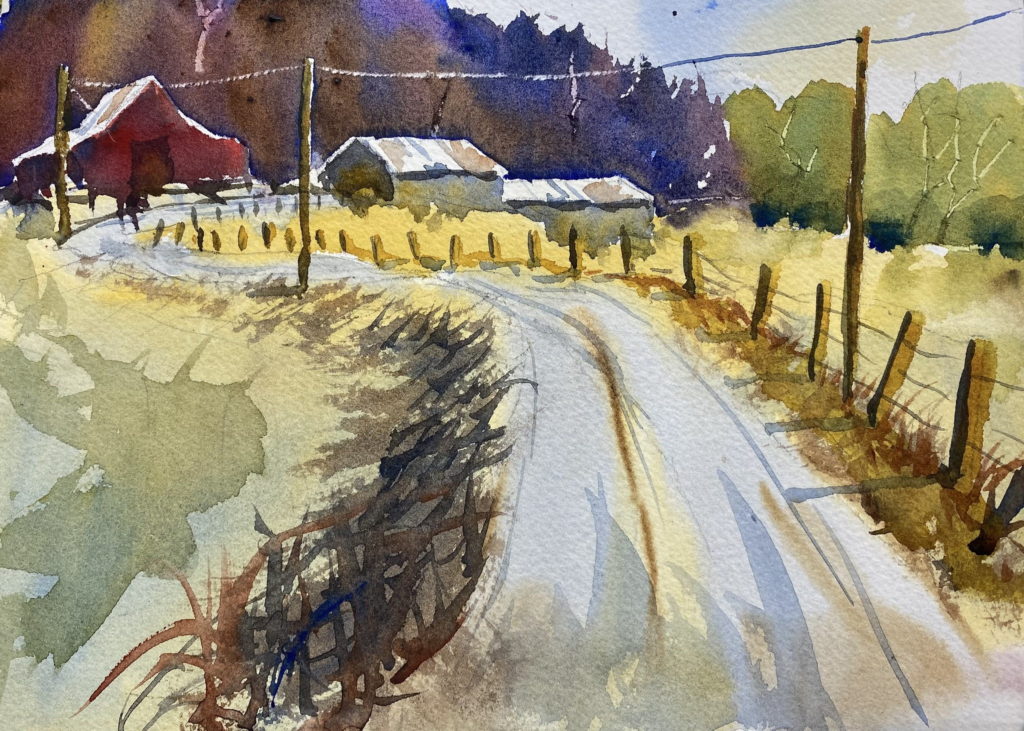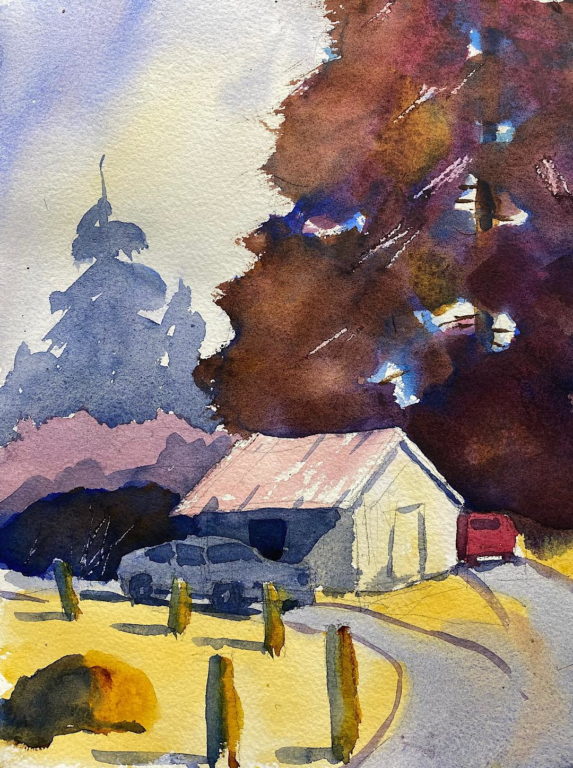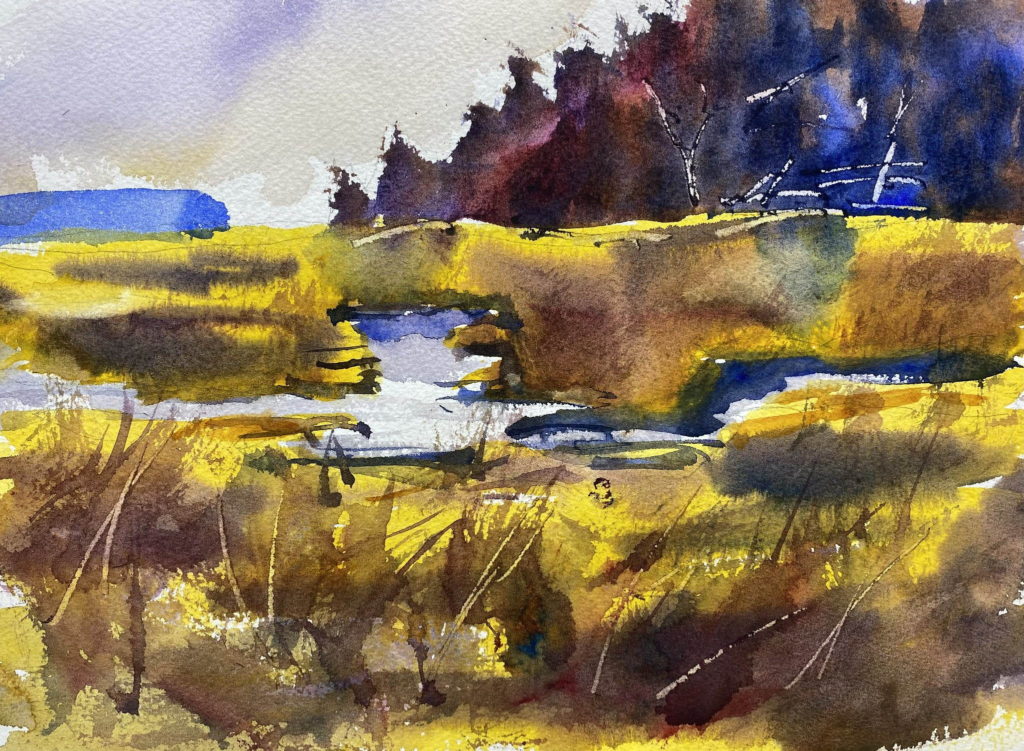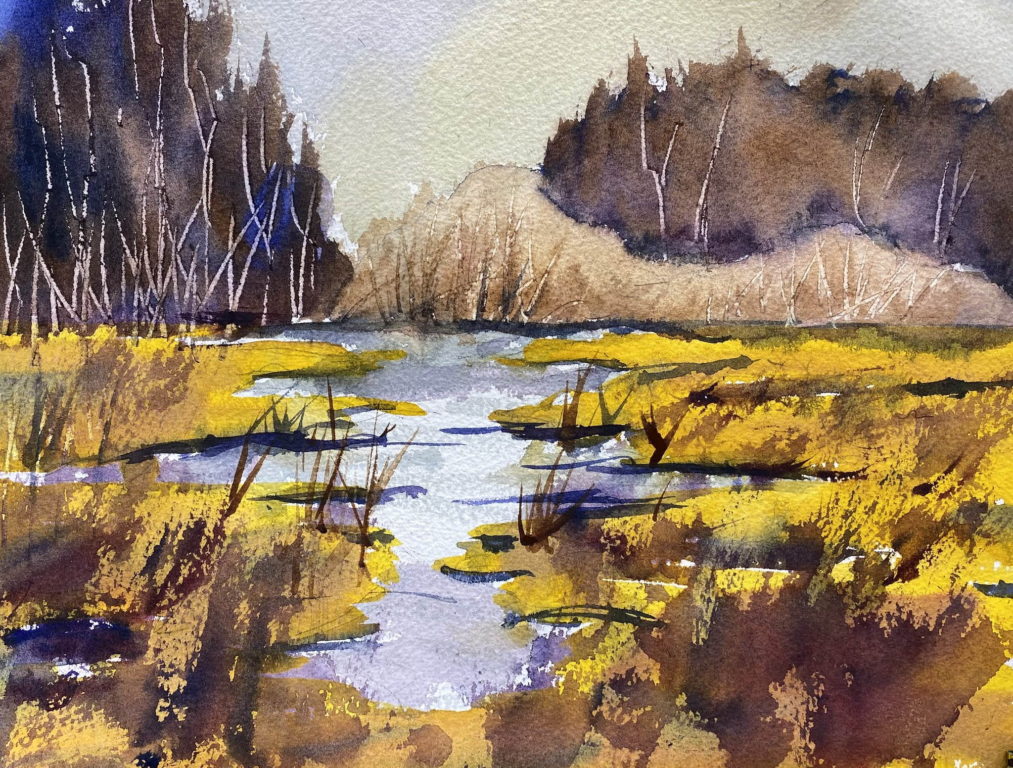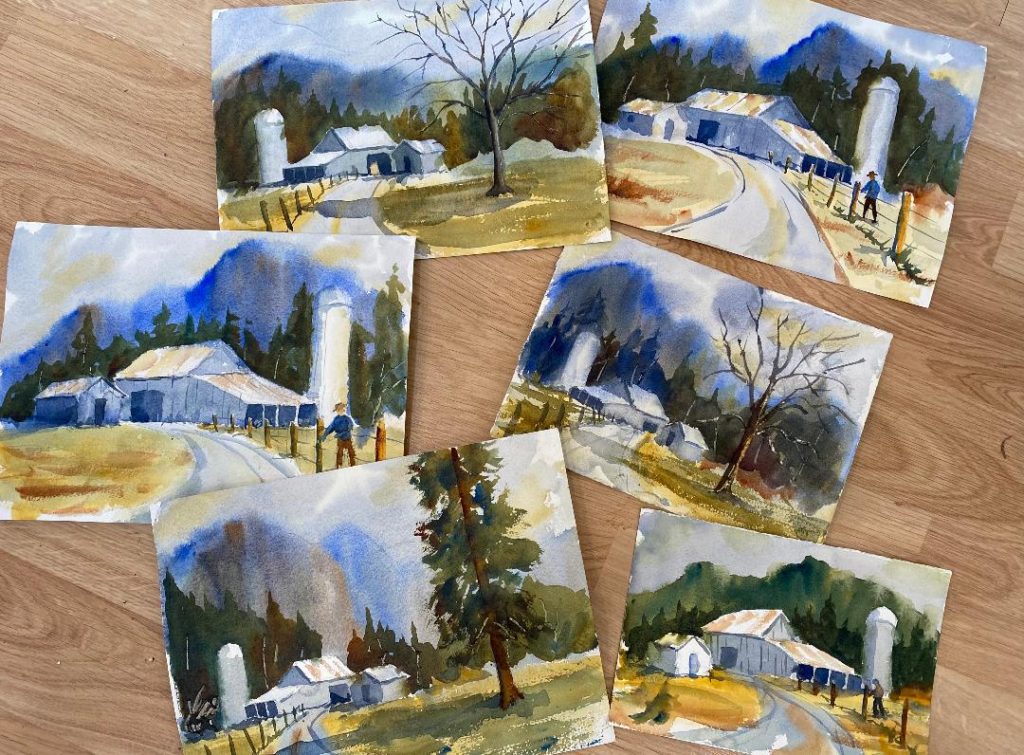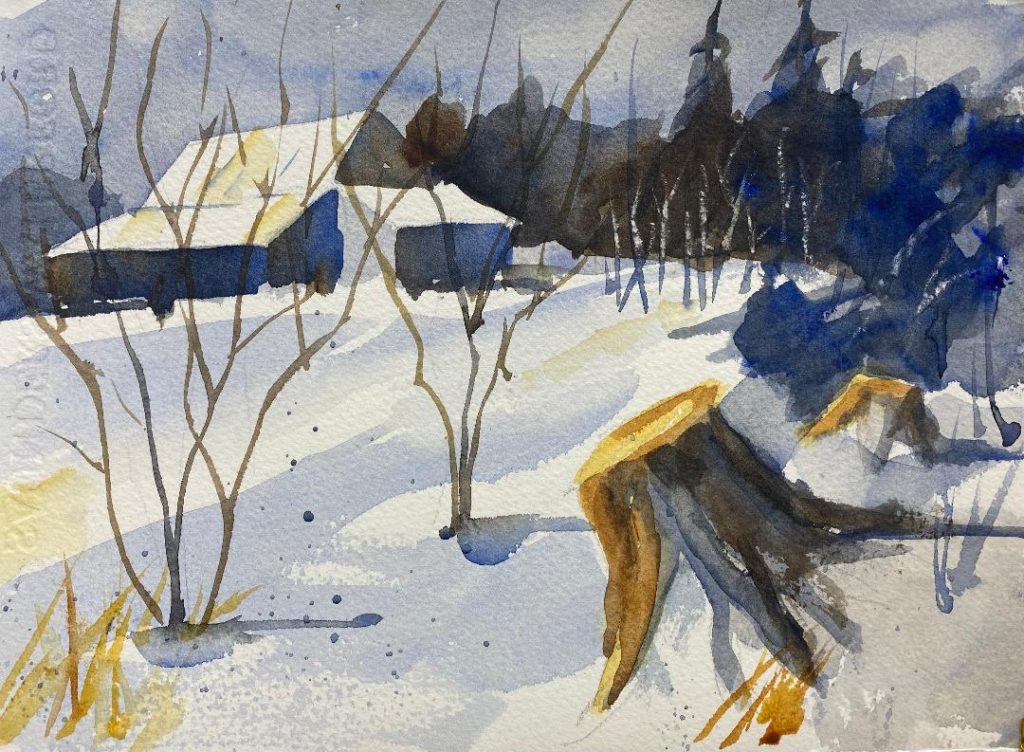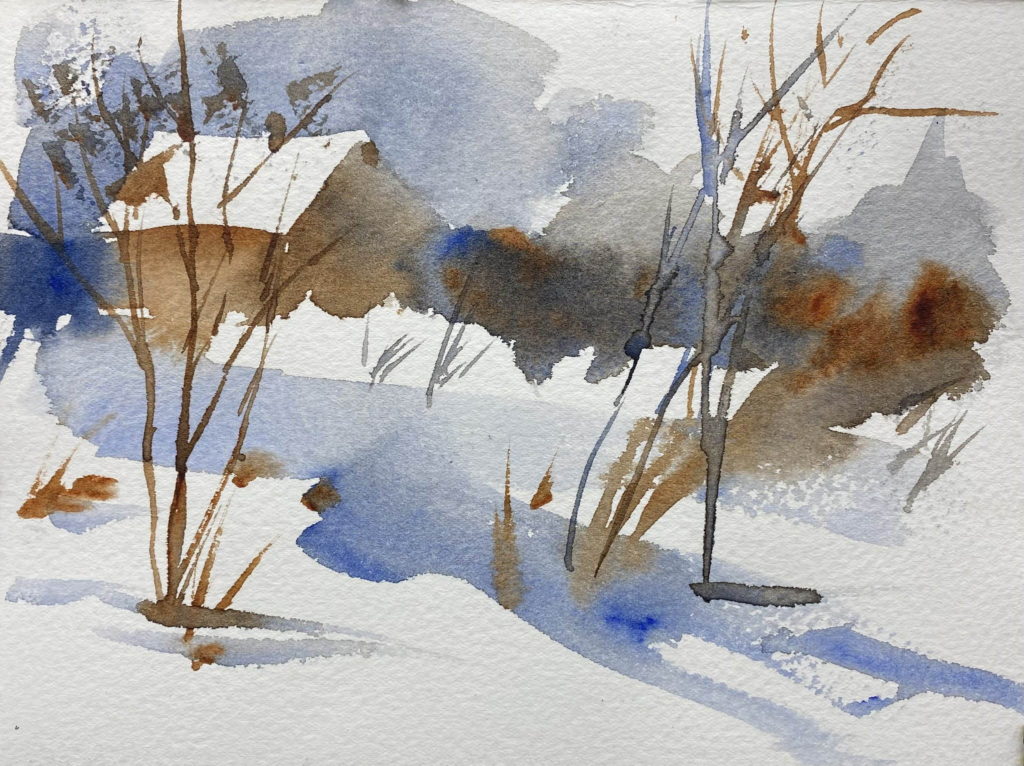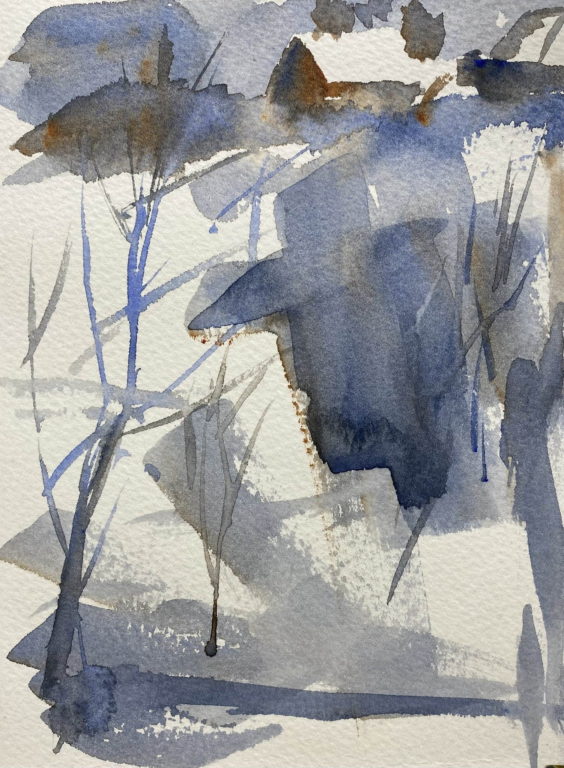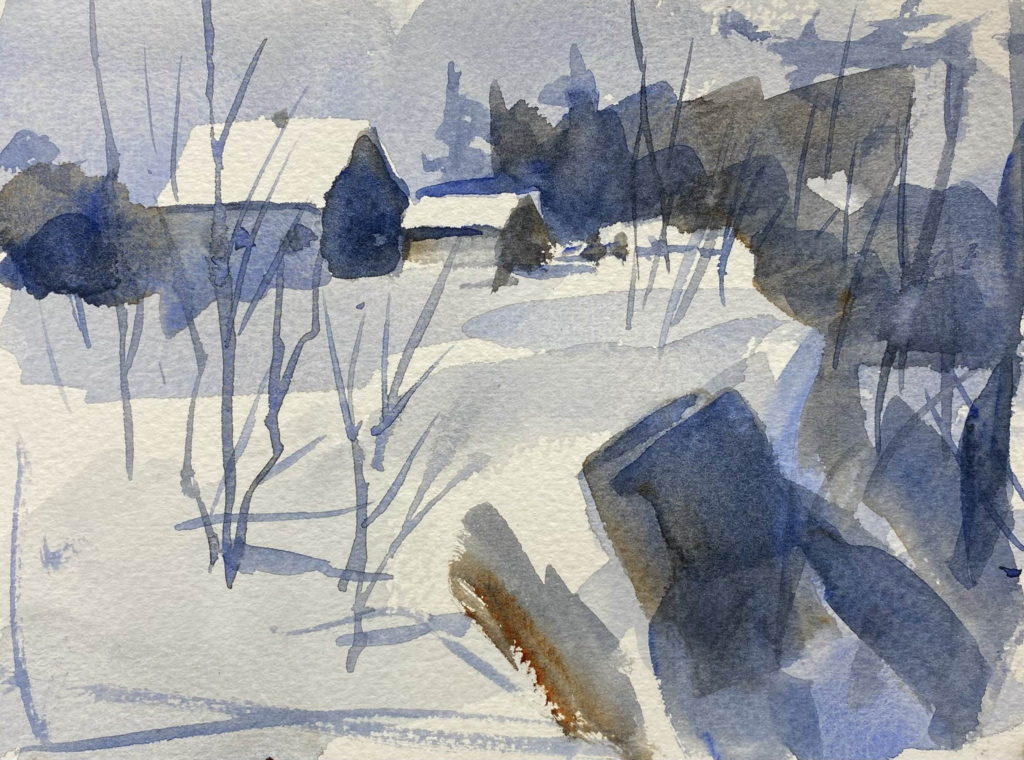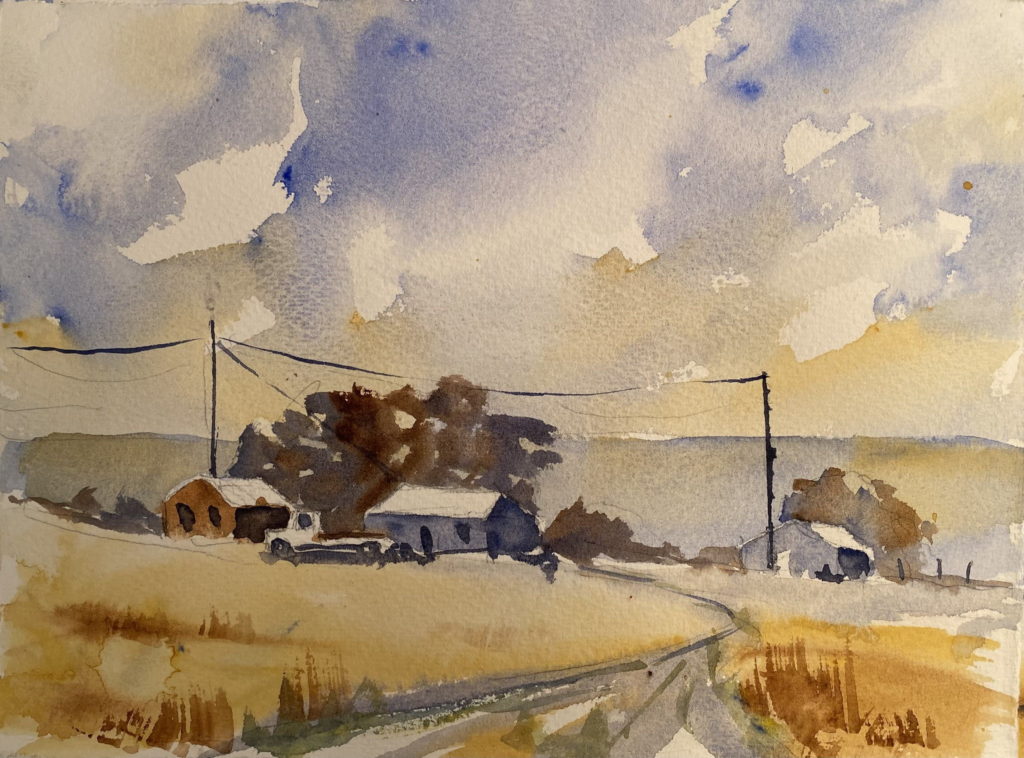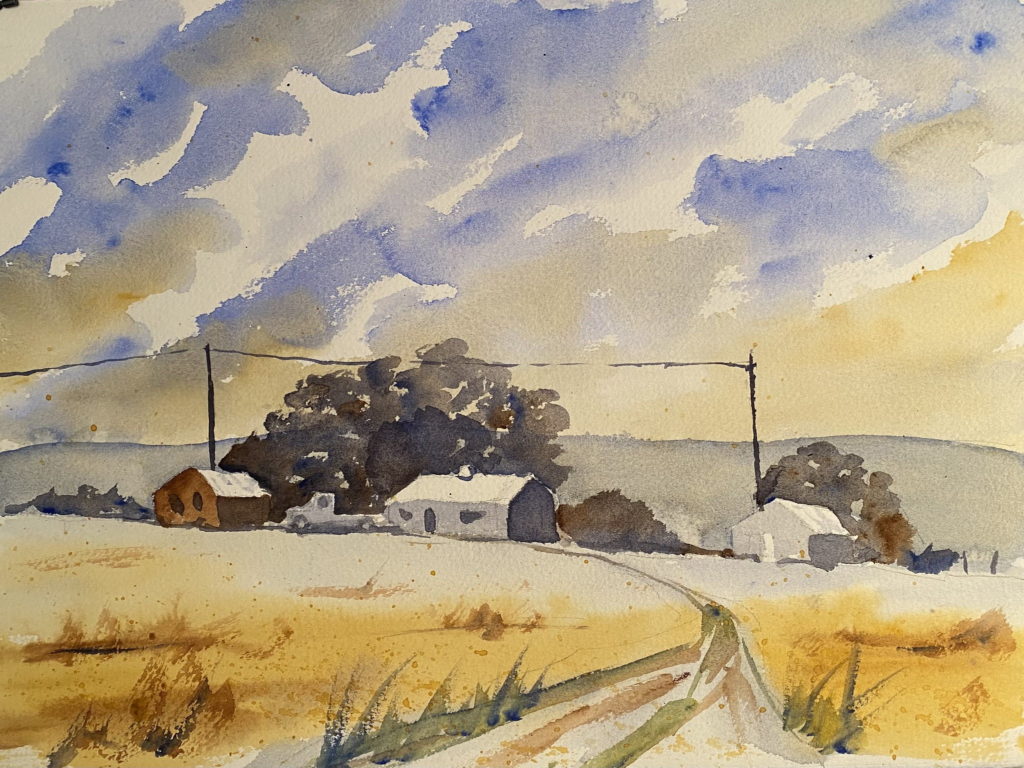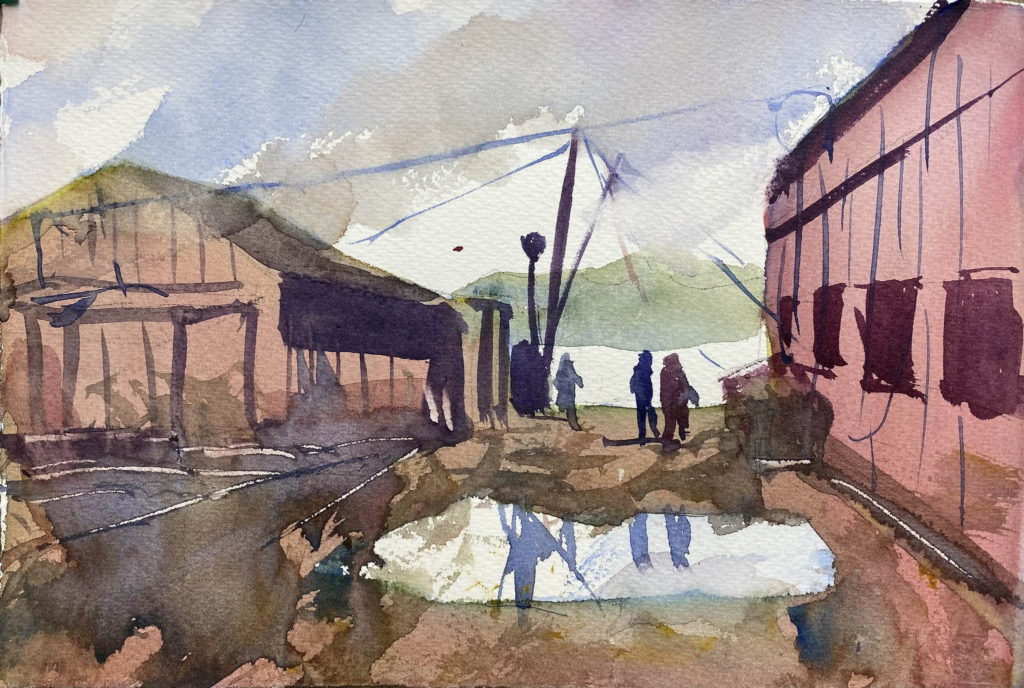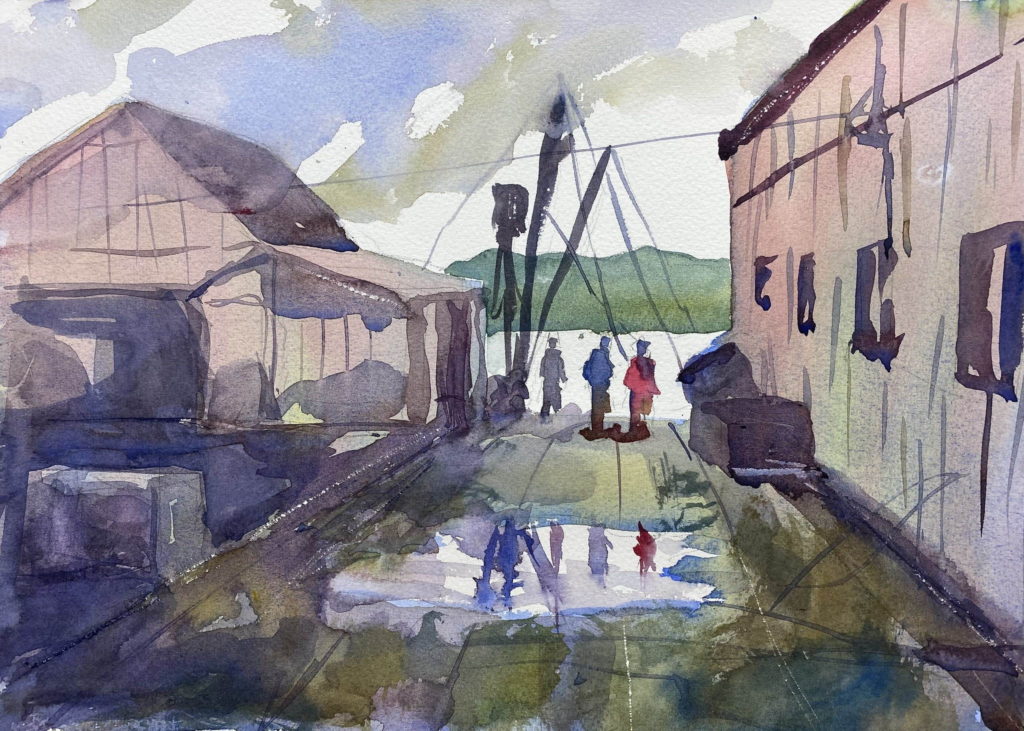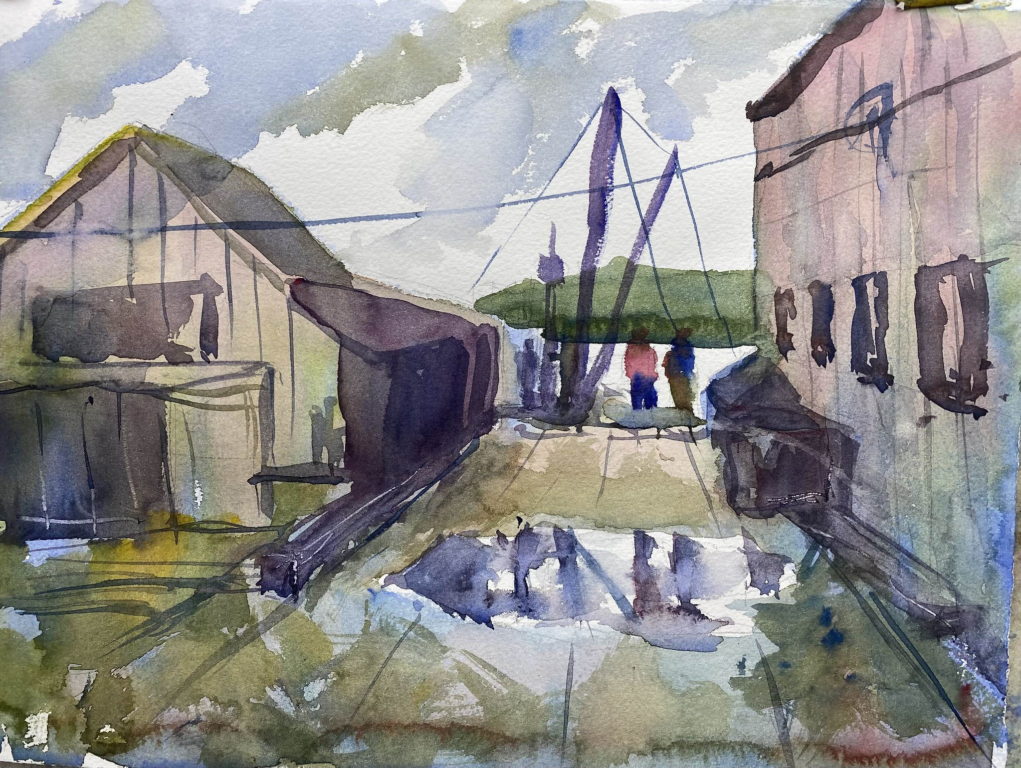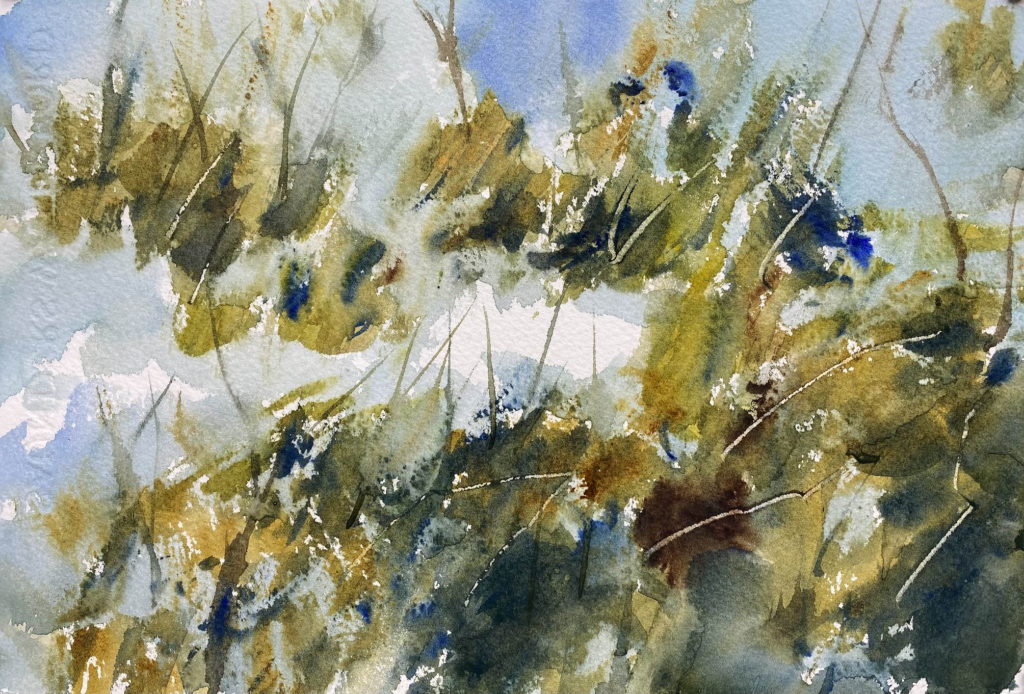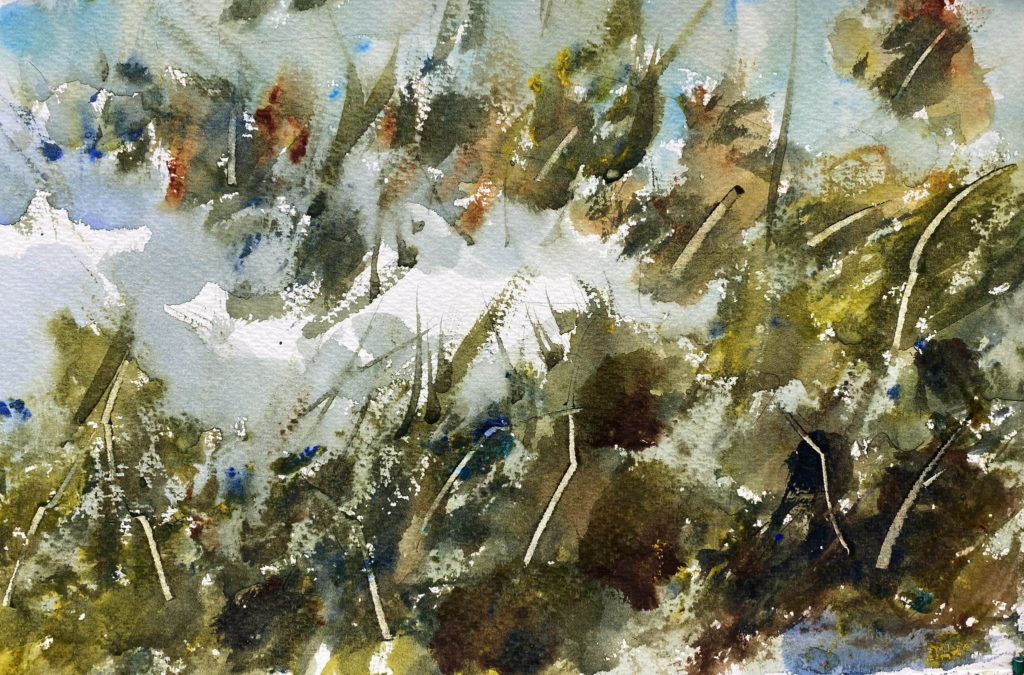Looser barns
I liked the barns at Hunter Farms that I painted in my last post, so I decided to paint them again, but more loosely. This time I sprayed the front and the back of the paper with water until it was saturated, then I applied the watercolor washes and let them run. The idea is to get a misty, watery feel to the painting. After letting the initial washes dry, I came back in with a dry brush and painted the darker shapes with harder edges. That way hopefully I would get some soft edges to the shapes and some hard edges.
I painted this scene twice. The first time I let the barns look watery and soft. In the second painting I firmed up the shapes of the barns.

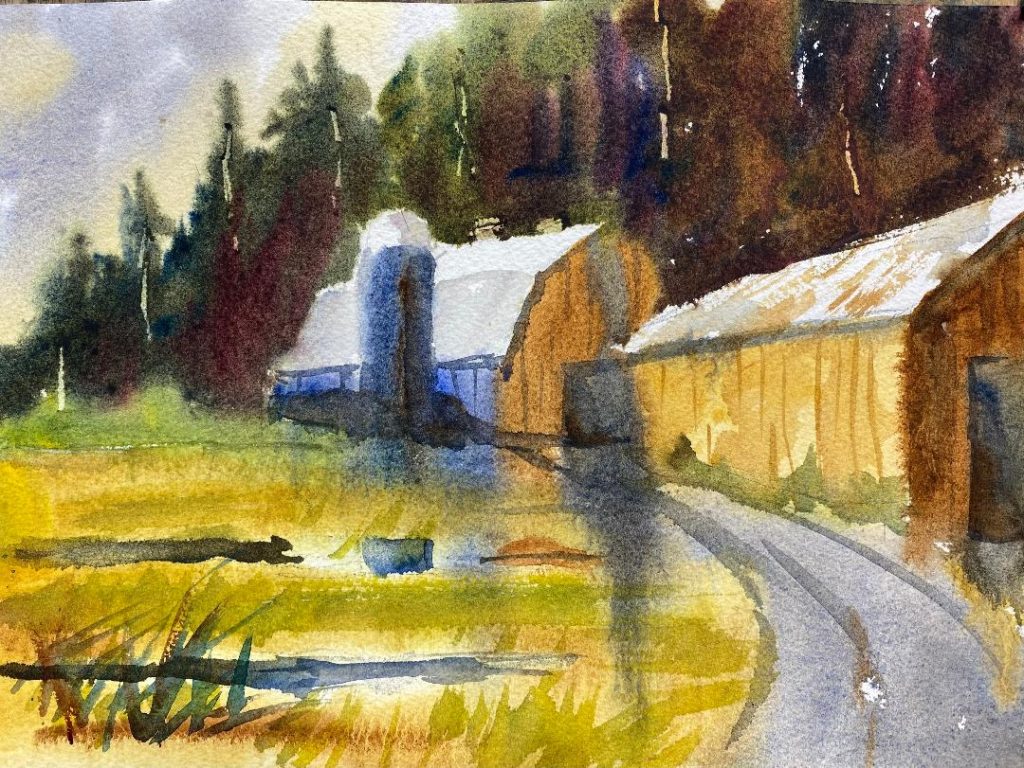
I submitted the second painting to Eric Wiegardt, my watercolor teacher, for our Saturday class critique. He liked the how the blue from the side of the center barn flowed down into the grass. He liked the variation of colors in the trees also. But again he remarked that the shadows in the barn doors and on the silo are”dead.” They need more of the meadow colors brought into them.
